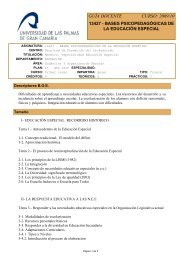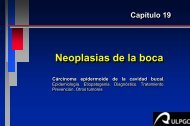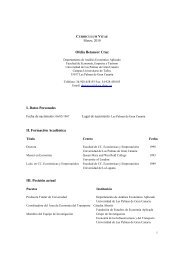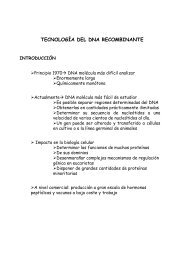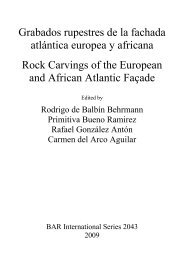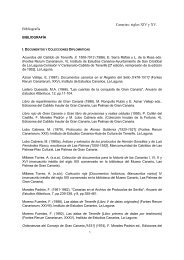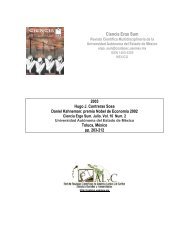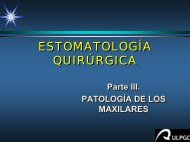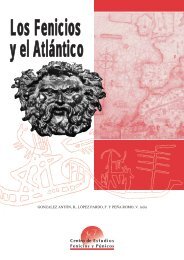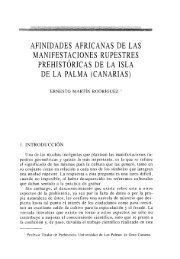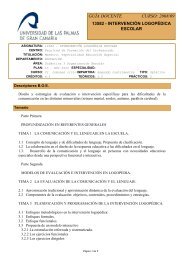Effects of goat milk or milk replacer diet on meat quality and fat ...
Effects of goat milk or milk replacer diet on meat quality and fat ...
Effects of goat milk or milk replacer diet on meat quality and fat ...
You also want an ePaper? Increase the reach of your titles
YUMPU automatically turns print PDFs into web optimized ePapers that Google loves.
S. Bañón et al. / Meat Science 72 (2006) 216–221 217<br />
they hardly accumulate sh<str<strong>on</strong>g>or</str<strong>on</strong>g>t chain <strong>fat</strong>ty acids in the adipose<br />
tissue. The saturated/unsaturated <strong>fat</strong>ty acid ratio in<br />
the <strong>fat</strong> varies between 1 <strong>and</strong> 2 (Potchoiba et al., 1990;<br />
Rojas et al., 1994; Todaro et al., 2002; Yeom, Van Trierum,<br />
Lee, & Beynen, 2003; Zygoyiannis et al., 1992).<br />
Although there are no sens<str<strong>on</strong>g>or</str<strong>on</strong>g>y studies about the eVects<br />
<str<strong>on</strong>g>of</str<strong>on</strong>g> lactati<strong>on</strong> <strong>on</strong> <str<strong>on</strong>g>goat</str<strong>on</strong>g> kid <strong>meat</strong>, c<strong>on</strong>sidering the above, it is<br />
probable that <str<strong>on</strong>g>diet</str<strong>on</strong>g> can aVect some sens<str<strong>on</strong>g>or</str<strong>on</strong>g>y attributes <str<strong>on</strong>g>of</str<strong>on</strong>g><br />
the cooked <strong>meat</strong>. The objective <str<strong>on</strong>g>of</str<strong>on</strong>g> this study was to<br />
determine the eVect <str<strong>on</strong>g>of</str<strong>on</strong>g> <str<strong>on</strong>g>diet</str<strong>on</strong>g> (<str<strong>on</strong>g>milk</str<strong>on</strong>g> <str<strong>on</strong>g>or</str<strong>on</strong>g> <str<strong>on</strong>g>milk</str<strong>on</strong>g> <str<strong>on</strong>g>replacer</str<strong>on</strong>g>) <strong>on</strong> the<br />
<strong>meat</strong> <strong>quality</strong> <strong>and</strong> <strong>fat</strong> compositi<strong>on</strong> <str<strong>on</strong>g>of</str<strong>on</strong>g> suckling kids <str<strong>on</strong>g>of</str<strong>on</strong>g> the<br />
Murciano-Granadina breed.<br />
2. Materials <strong>and</strong> methods<br />
2.1. Animals <strong>and</strong> rearing<br />
Thrity-six Murciano-Granadina male <str<strong>on</strong>g>goat</str<strong>on</strong>g> kids were<br />
r<strong>and</strong>omly assigned to <strong>on</strong>e <str<strong>on</strong>g>of</str<strong>on</strong>g> two treatments, either <str<strong>on</strong>g>goat</str<strong>on</strong>g><br />
<str<strong>on</strong>g>milk</str<strong>on</strong>g> “GM” <str<strong>on</strong>g>or</str<strong>on</strong>g> <str<strong>on</strong>g>milk</str<strong>on</strong>g> <str<strong>on</strong>g>replacer</str<strong>on</strong>g> “MR” ad libitum during<br />
autumn–winter. Kids were fed colostrum during the Wrst<br />
2 days <str<strong>on</strong>g>of</str<strong>on</strong>g> life. The approximate compositi<strong>on</strong> <str<strong>on</strong>g>of</str<strong>on</strong>g> the natural<br />
<str<strong>on</strong>g>milk</str<strong>on</strong>g> was as follows; moisture 84%, lactose 4.7%, protein<br />
4.1% <strong>and</strong> lipids 6.4%. The commercial <str<strong>on</strong>g>milk</str<strong>on</strong>g> <str<strong>on</strong>g>replacer</str<strong>on</strong>g><br />
c<strong>on</strong>sisted <str<strong>on</strong>g>of</str<strong>on</strong>g> 64% powdered skimmed <str<strong>on</strong>g>milk</str<strong>on</strong>g>, coc<strong>on</strong>ut oil<br />
<strong>and</strong> <strong>fat</strong>, <strong>and</strong> cereal products <strong>and</strong> by-products. The proximate<br />
compositi<strong>on</strong> <str<strong>on</strong>g>of</str<strong>on</strong>g> the <str<strong>on</strong>g>milk</str<strong>on</strong>g> <str<strong>on</strong>g>replacer</str<strong>on</strong>g> was as follows;<br />
moisture 10%, carbohydrates 35.4%, protein 23.7%, lipids<br />
24.2% <strong>and</strong> ash 6.7%. On average, the <str<strong>on</strong>g>milk</str<strong>on</strong>g> <str<strong>on</strong>g>replacer</str<strong>on</strong>g><br />
was diluted in water at 100 g/l. An automatic feed<br />
machine (AG21, JR) was used. No feeding restricti<strong>on</strong>s<br />
(access to dams <str<strong>on</strong>g>or</str<strong>on</strong>g> to machine) were applied to GM <strong>and</strong><br />
MR kids. Table 1 shows the proWle <str<strong>on</strong>g>of</str<strong>on</strong>g> the main <strong>fat</strong>ty<br />
acids <str<strong>on</strong>g>of</str<strong>on</strong>g> both the <str<strong>on</strong>g>goat</str<strong>on</strong>g> <str<strong>on</strong>g>milk</str<strong>on</strong>g> <strong>and</strong> the <str<strong>on</strong>g>milk</str<strong>on</strong>g> <str<strong>on</strong>g>replacer</str<strong>on</strong>g> used.<br />
2.2. Slaughtering<br />
The kids were slaughtered at 35 § 5 days <str<strong>on</strong>g>of</str<strong>on</strong>g> age (GM:<br />
35.1 § 5.7; MR: 35.8 § 5.7) <strong>and</strong> weighed 7.6 § 0.4 kg<br />
(GM: 7.49 § 0.42; MR: 7.56 § 0.26). Transp<str<strong>on</strong>g>or</str<strong>on</strong>g>tati<strong>on</strong><br />
from the farm to the slaughterhouse took 30 § 10 min.<br />
Stunning was perf<str<strong>on</strong>g>or</str<strong>on</strong>g>med in the waiting area using electrical<br />
methods (90 W f<str<strong>on</strong>g>or</str<strong>on</strong>g> 5 s). After stunning, the kids<br />
were hoisted by their hind legs, <strong>and</strong> exanguated. The carcasses,<br />
with heads, th<str<strong>on</strong>g>or</str<strong>on</strong>g>acic entrails <strong>and</strong> omenta, were<br />
cooled f<str<strong>on</strong>g>or</str<strong>on</strong>g> 24 h at 3 °C.<br />
2.3. Physical <strong>and</strong> chemical analysis<br />
The proximate compositi<strong>on</strong> <str<strong>on</strong>g>of</str<strong>on</strong>g> <str<strong>on</strong>g>milk</str<strong>on</strong>g>, <str<strong>on</strong>g>milk</str<strong>on</strong>g> <str<strong>on</strong>g>replacer</str<strong>on</strong>g><br />
<strong>and</strong> raw <strong>meat</strong> in the L<strong>on</strong>gissimus d<str<strong>on</strong>g>or</str<strong>on</strong>g>si-lumb<str<strong>on</strong>g>or</str<strong>on</strong>g>um muscle<br />
were determined. The moisture (expressed as a percentage)<br />
was determined as per ISO N<str<strong>on</strong>g>or</str<strong>on</strong>g>m 1442 (1997) using<br />
a drying oven (Heraeus). Total protein (expressed as a<br />
percentage) was determined following the Kjeldhal<br />
Table 1<br />
Maj<str<strong>on</strong>g>or</str<strong>on</strong>g> <strong>fat</strong>ty acids <str<strong>on</strong>g>of</str<strong>on</strong>g> <str<strong>on</strong>g>goat</str<strong>on</strong>g> <str<strong>on</strong>g>milk</str<strong>on</strong>g> <strong>and</strong> <str<strong>on</strong>g>milk</str<strong>on</strong>g> <str<strong>on</strong>g>replacer</str<strong>on</strong>g><br />
Fatty acid (%) a GM b MR b<br />
C4:0 0.79 0.28<br />
C6:0 1.70 0.18<br />
C8:0 1.04 4.81<br />
C10:0 4.22 4.52<br />
C12:0 3.91 29.22<br />
C14:0 11.29 7.81<br />
C15:0 0.70 0.09<br />
C16:0 30.10 23.22<br />
C16:1 0.64 6.69<br />
C17:0 0.51<br />
C18:0 13.74 3.41<br />
C18:1 21.84 15.94<br />
C18:2 9.53 3.62<br />
SFA c 0.68 0.75<br />
UFA 0.32 0.25<br />
UFA/SFA 2.12 3.06<br />
a Percentage <strong>fat</strong>ty acid methyl ester <str<strong>on</strong>g>of</str<strong>on</strong>g> total acid methyl ester (GM:<br />
952 mg/g; MR 984 mg/g).<br />
b GM, <str<strong>on</strong>g>goat</str<strong>on</strong>g> <str<strong>on</strong>g>milk</str<strong>on</strong>g>; MR, <str<strong>on</strong>g>milk</str<strong>on</strong>g> <str<strong>on</strong>g>replacer</str<strong>on</strong>g>. N D 12.<br />
c SFA, saturated <strong>fat</strong>ty acids; UFA, unsaturated <strong>fat</strong>ty acids.<br />
method as speciWed by ISO N<str<strong>on</strong>g>or</str<strong>on</strong>g>m 937 (1978) using a<br />
423/326 digesti<strong>on</strong>/distillati<strong>on</strong> unit (Büchi) <strong>and</strong> a 702 SM<br />
Titrat<str<strong>on</strong>g>or</str<strong>on</strong>g> (Metrohm). Intramuscular <strong>fat</strong> (expressed as a<br />
percentage) was determined as per ISO N<str<strong>on</strong>g>or</str<strong>on</strong>g>m 1443<br />
(1979) using an HT2 1045 Soxtec System extracti<strong>on</strong> unit<br />
(Tecat<str<strong>on</strong>g>or</str<strong>on</strong>g>). Ash c<strong>on</strong>tent (expressed as a percentage) was<br />
determined as per ISO N<str<strong>on</strong>g>or</str<strong>on</strong>g>m 936 (1998) using a muZe<br />
furnace (Heraeus).<br />
Total collagen (expressed as a percentage) was determined<br />
by spectrophotometry as described by B<strong>on</strong>net<br />
<strong>and</strong> Kopp (1984). Cholesterol (expressed in mg/kg) was<br />
determined by HPLC as described by Cayuela, Bañón,<br />
Ros, <strong>and</strong> Garrido, 2003. The HPLC system was made up<br />
<str<strong>on</strong>g>of</str<strong>on</strong>g> the following: an L-6200 pump (Merck–Hitachi); a<br />
360 auto-sampler <strong>and</strong> a Sedex 45 light-scattering detect<str<strong>on</strong>g>or</str<strong>on</strong>g><br />
(S. E. D. E. R. E.). The other comp<strong>on</strong>ents were a<br />
waters resolve guard-pack silica pre-column <strong>and</strong> a<br />
waters resolve 5-m spherical silica column, 3.9 150 mm<br />
(Waters). The mobile phase was a 90:10 v/v mix <str<strong>on</strong>g>of</str<strong>on</strong>g> isooctane<br />
<strong>and</strong> tetrahydr<str<strong>on</strong>g>of</str<strong>on</strong>g>uran. The c<strong>on</strong>centrati<strong>on</strong> <str<strong>on</strong>g>of</str<strong>on</strong>g> haematic<br />
pigments (expressed in mg/g) was determined by<br />
means <str<strong>on</strong>g>of</str<strong>on</strong>g> spectrophotometry as described by Garrido,<br />
Pérez, <strong>and</strong> Sanchez-Ferrer (1994). Colour (expressed in<br />
CIELab values) was measured by reXectance using a<br />
Minolta Chromameter. Chroma D (a 2 + b 2 ) 1/2 <strong>and</strong><br />
Hue D Arctan (b/a). A micro-pH-meter (Cris<strong>on</strong>) with a<br />
Xerolyt (Ingold) electrode was used to measure pH.<br />
Water retenti<strong>on</strong> capacity (expressed as a percentage) was<br />
calculated acc<str<strong>on</strong>g>or</str<strong>on</strong>g>ding to Grau <strong>and</strong> Hamm (1957).<br />
Fatty acids in the <str<strong>on</strong>g>milk</str<strong>on</strong>g>, <str<strong>on</strong>g>milk</str<strong>on</strong>g> <str<strong>on</strong>g>replacer</str<strong>on</strong>g> <strong>and</strong> perirenal <strong>fat</strong><br />
were determined as per Granados (2000). Fat was<br />
extracted following the method <str<strong>on</strong>g>of</str<strong>on</strong>g> Folch, Lees, <strong>and</strong> Stanley<br />
(1957). Fatty acids were separated pri<str<strong>on</strong>g>or</str<strong>on</strong>g> to derivati-



